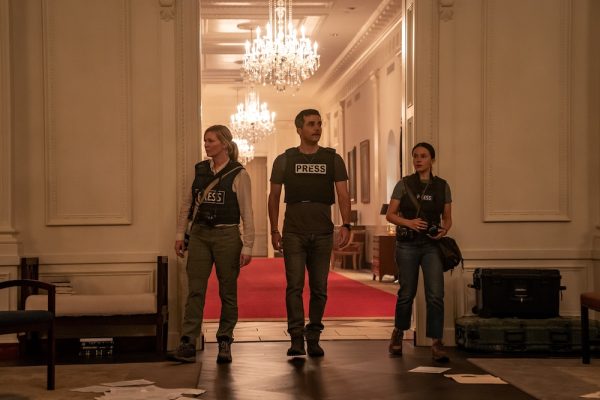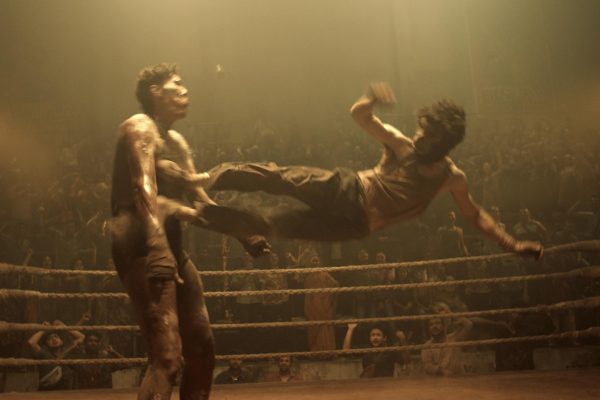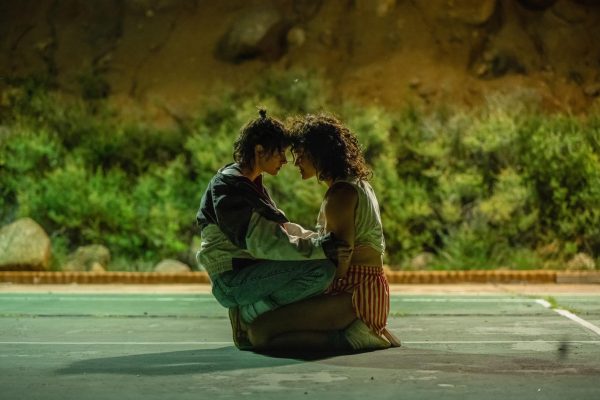Ways to enhance the moviegoing experience
January 14, 2019
Going to the movies is a special time. Being in a theater with no cell phone on, no talking and no distractions is the way that films are meant to be viewed. Just a viewer and a film one-on-one. Film is a form of entertainment that stays relevant with its wide variety of genres and stories. As the year develops, there are several tasks that can be done to enhance one’s perception of film.
-
AMC Stubs A-List
With over 600 locations in the U.S. alone, including AMC Market Square 10 in DeKalb, AMC is the largest chain of theaters in the world, according to AMC’s official website. After a falling out with the ticketing service MoviePass, AMC theaters launched the A-List as a part of their AMC Stubs Rewards Program. For $20 a month, subscribers have the ability to see three films every week, including IMAX, Dolby Cinema, RealD 3D and Big D screens, according to an official news release by AMC Theatres announcing the A-List.
With the cost of a ticket for normal 2D screenings averaging $8.97, according to Hollywood Reporter, purchasing an A-List subscription makes financial sense for the frequent filmgoer. Besides free tickets, the service also allows free reservations, popcorn and soda upgrades, priority lanes and free refills of large popcorn. If going to the movies is a frequent pleasure, then a subscription to the A-List may add to the experience.
-
Go to Older Theaters
Film has existed since the late 19th century, and the theaters where they’re played have been around for just as long. While many of these older theaters have since been destroyed to make way for other structures or newer theaters, there are still plenty of them left, including the Egyptian Theatre, 135 N. Second St., which opened its doors on Dec. 10, 1929, according to the Egyptian Theatre’s website. Older theaters have an aesthetic that is non-existent in modern chains. They contain the architecture and the spirit of days long since gone. These theaters often show older films as well as hosting live acts.
Other kinds of nostalgic viewing include drive-in theaters. While they aren’t as frequent as they used to be, drive-ins offer a fun experience straight out of the 1950s, which is perfect for summer blockbusters. Local drive-ins include the 34 Drive-In Theater in Earlville and the Cascade Drive-In in West Chicago. Being able to see 2019’s “Avengers: Endgame,” “Spider-Man: Far From Home” and “The Lion King” from the viewer’s own car is a unique experience that every movie lover should experience.
-
Check Out Local Film Series and Film Festivals
When in the presence of older theaters and college campuses, expect film festivals and series. The idea of a festival is a basic one: It is simply an exhibition of films to give young, ambitious filmmakers a spotlight for their passion. Local festivals include the Reality Bytes Film Festival, which is held annually at Cole Hall 100. The festival is a three-night affair in which several submissions at the high school and college level are shown to the general public during the first two nights. On the third night, a guest speaker with ties to the film industry is brought in to discuss their personal experiences. Afterward, three films are selected to receive cash prizes from three categories: best documentary, best fiction film and best high school submission. Seeing these festivals gives filmmakers an audience to view their work and can also broaden the perspective of the viewer.
The same can be said for film series. Local theaters, including the Egyptian Theatre, show film series multiple times a year, usually with a collective theme. Series are beneficial because they offer a selection of both well-known and obscure indie films. The Richard Jenkins film series, which played weekly during September and October at the Egyptian Theatre, was a great balance of the two categories. The series contained both Jenkins’ famous work, including “Step Brothers” and “The Shape of Water,” as well as lesser known films, such as “Norman” and “Bone Tomahawk.” By going to these series, filmgoers are able to view movies they love while also experiencing new stories that otherwise might have gone unnoticed.
-
Learn More About the Art of Filmmaking
What is so wonderful about film is that anyone can enjoy it. However, one way to further explore film is to learn about the science of filmmaking. Figuring out what cinematography is and how editing can impact the story structure of a film can not only increase knowledge of the industry, but can open the viewer’s eyes to elements of the film that were previously hidden.
There are several sources that can be used in this area. Many books have been published on the exact art of film, including “Making Movies” by Sidney Lumet, who was the director of several acclaimed films, including “12 Angry Men,” 1974’s “Murder on the Orient Express” and “Dog Day Afternoon.” In his book, Lumet gives a realistic and honest portrayal of all of the elements that make a film. Other options include classes on film at colleges and online as well as videos on platforms like YouTube. These offer individual portions dedicated to particular aspects of film, which allow interested people to take each aspect one at a time.
-
Find Film Critics
The common stereotype of a film critic is a snooty, pompous individual who believes that only the most boring of films are true art, whereas the films that the general public sees are cheap swill. This is, of course, false. Film critics are normal people who see film as a means to entertain as well as express ideas. They also see larger quantities of films, which means that they can predict what might happen faster than the average filmgoer and can lead to more negative reviews of a film that the general public might like or simply shrug off.
Because of this constant exposure to film, critics are also able to bring up elements of film that might have passed under the radar. “La La Land” was critically well received, earning six Oscars, and audiences loved it because it grossed $446 million, according to Box Office Mojo. The average filmgoer would love the musical sequences because they are visually stunning and have great songs, but a critic might like them for those elements and also how the camera moves. In “La La Land,” the camera moves around to look like the sequences were done in one take. Therefore, critics are able to bring up these elements because of how well they speak the motion-picture language. Whether on newspaper, podcast or YouTube, there are a variety of critics to consult on film.












